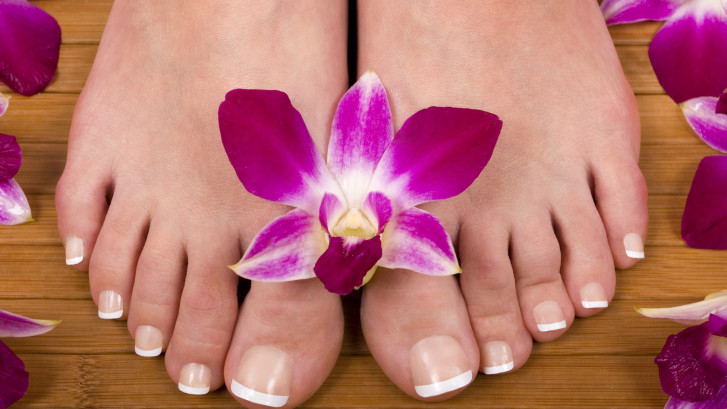Pedicure Pointers
Spring is finally here, which means pedicure season for women!
Follow these podiatrist verified dos and don’ts before heading to the nail salon to keep your feet looking and feeling fabulous.

Dos
- If you suffer from diabetes or poor circulation in your feet, consult your podiatrist about a customized pedicure for optimal health.
- Salon foot baths are usually cleanest earlier in the day, so try to schedule your pedicure in the morning. If this option isn’t feasible, make sure the salon filters and cleans the foot baths between clients.
- If the salon does not practice proper sterilizing techniques for their instruments, bacteria can easily move from the last client to you. If possible, it is best to bring your own pedicure utensils to the salon.
- Eliminating dead skin build up, known as calluses, on the heel, ball, and sides of the feet can be tricky. Start by soaking your feet in warm water for five minutes. Then use a pumice stone, foot file, or exfoliating scrub to gently smooth rough patches.
- Manicure scissors and fingernail clippers increase the risk of ingrown toenails due to their small, curved shape. When trimming nails, it is best to use a toenail clipper with a straight edge to ensure the toenail is cut straight across.
- If you want to smooth the edges of your nail, use an emery board to lightly file in one direction without using too much pressure.
- Keep your nails clean by gently running a wooden or rubber manicure stick under your nails. This will help remove dirt and build-up you may or may not see.
- Keep your soles soft by regularly applying emollient-enriched moisturizer.
- Use a rubber cuticle pusher or manicure stick to gently push back cuticles.
- Always remove nail polish with non-acetone nail polish remover.
Don’ts
- As embarrassing as it may be, resist the urge to shave your legs before a pedicure. Freshly shaven legs or small cuts on your legs may allow bacteria to enter.
- Never use the same tools for a manicure and a pedicure because bacteria and fungus can transfer between fingers and toes.
- Never use a foot razor to remove dead skin because it can result in permanent damage if used incorrectly. If too much skin is removed, you can easily get an infection.
- Never round the edges of your toenails because this increases risk of ingrown nails.
- Don’t share nail files with friends because they are extremely porous, easily trapping germs, and are unable to be sterilized. If you are not positive that your nail salon uses a new nail file with each client, be sure to bring your own.
- Don’t use sharp tools to clean under nails because even a small puncture can lead to infection.
- Leaving behind any moisture between your toes can promote the development of athlete’s foot or a fungal infection.
- Cuticles serve as a barrier against bacteria, so never cut them. Doing so increases the risk of infection.
- Don’t apply nail polish over thick and discolored toenails because this could be a sign of a fungal infection. Nail polish locks out moisture and does not allow the nail bed to breathe.
If you have any additional questions please feel free to call our office at 254-300-7703.
If you believe you might have an ingrown toenail or an infection, please call our office to schedule an appointment with our doctor.


